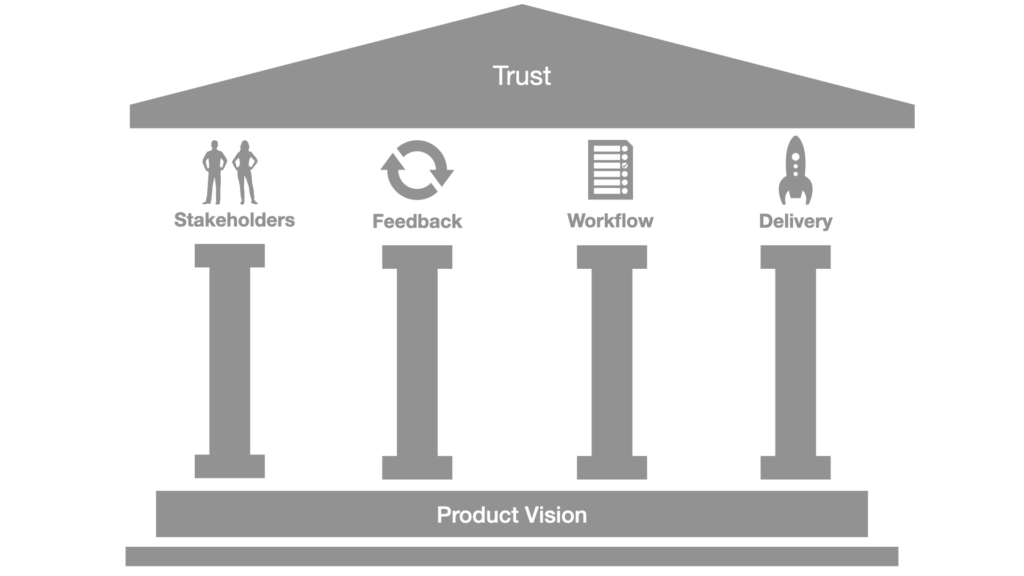Over the past couple of weeks we’ve covered the pillars of a high performing software team:
- Stakeholders: the first pillar of high performing teams
- Feedback: getting the software right the “first” time
- Workflow: the who, what, and when of efficient development
- Delivery: the moment your team creates value
We’ve seen how these pillars build a high level of trust, but a team can’t be successful if the software they create doesn’t solve a problem. Knowing and defining the problem must be the foundation of everything we do. Just like building a home on a weak foundation, it doesn’t matter how well we’ve constructed the supports, the whole thing is going to eventually come crashing down. The Production Vision provides that foundation.

The best way to ensure a clear Product Vision is to include a Product Owner on the team. The Product Owner has studied the film. They understand what they’re up against and have a winning strategy. The strategy may be adjusted based on the game script, the plays might be changed, but they are confident in their ability to make the right calls.
Sports analogies aside, the Product Owner must thoroughly understand the problem you are trying to solve and has the authority to make product decisions. At the start of a project, the Product Owner should provide the following:
- Product Vision Statement: This should be a clear and concise statement of the problem your software product is trying to solve. The vision must motivate and inspire the team. The stakeholders and developers must know what problem they are trying to solve and why.
- Product Roadmap: The roadmap is created in a top-down fashion from the Product Vision. The roadmap is serves as an evolving guide of the product direction over time, but should directly trace back to solving the problem stated in the vision.
- Backlog Items: The Product Owner should either be defining these, or at the very least sign off on them. They should be present for all backlog grooming sessions to communicate product direction through preparation and prioritization.
While the Product Vision Statement should be clear from the very start, the Product Roadmap and Backlog Items may seem a bit hazy the further we look into the future. Tactical development planning for iterations should focus only on near term priorities. Continuous delivery and feedback allow us to fine tune the specifics as we gain more understanding of the problem we are solving.
There may be many stakeholders involved in a project who are providing feedback, but there should be one Product Owner. They are responsible for continuing to communicate the product vision and are ultimately accountable for the end result. Without a Product Owner, at best productivity is lost while waiting on stakeholders to come to a consensus. At worst, the project fails entirely due to a lack of clear direction.
A software team’s success will be defined by whether they are solving the right problem. No matter how much team work or automation, a clear Product Vision communicated consistently throughout the project is the foundation of a successful team. The Product Owner is responsible for communicating that vision.
Is your software development team performing at its peak? We can help! Schedule a free consultation to find out more.
